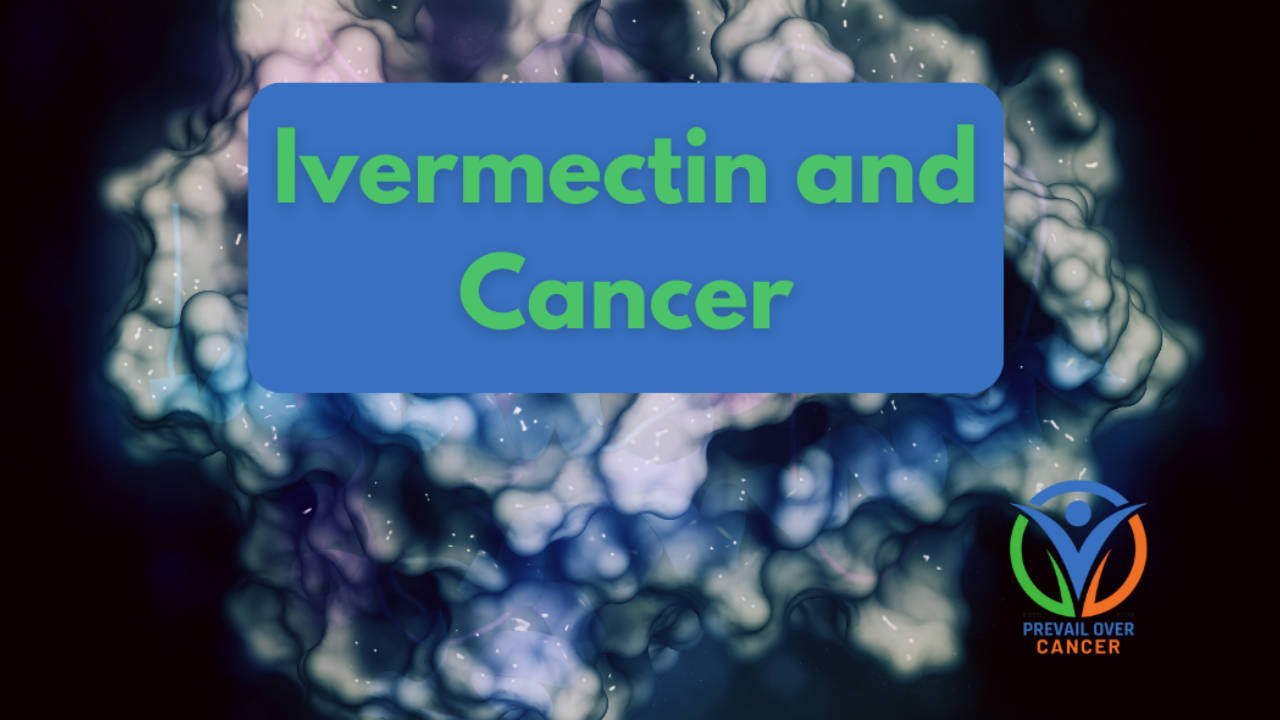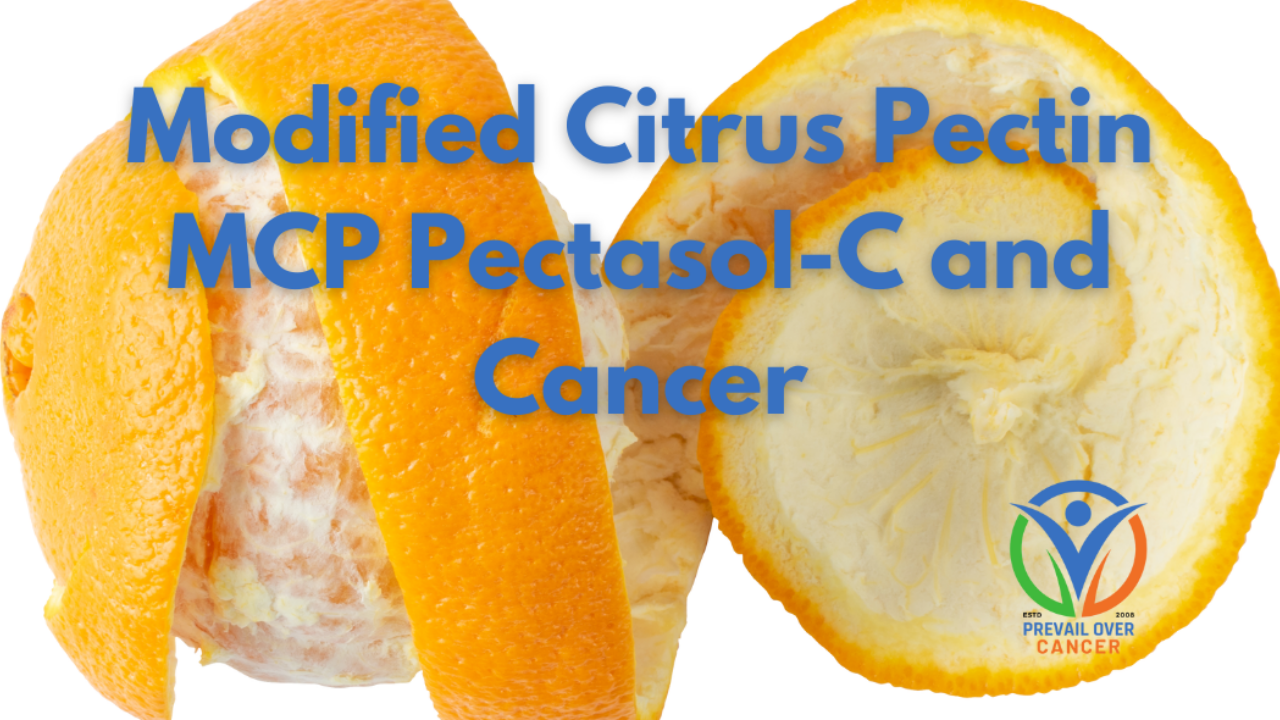Ivermectin: From Antiparasitic to Anticancer Actions

Breaking Ground in Cancer Research: Ivermectin Cancer Potential Revealed!
Researched and written by Keith Bishop, Clinical Nutritionist, Cancer Coach, Retired Pharmacist
Notice: This information is intended for educational purposes only and should not be used as a substitute for professional medical advice, diagnosis, or treatment. Always consult with your healthcare team before considering the integration of ivermectin or any other therapy into your health program to ensure it aligns with your specific medical needs and circumstances.
Ivermectin History
Ivermectin is a medication primarily used to treat parasitic infections. It was initially developed in the 1970s for veterinary use but was later approved for human use in the 1980s. In humans, ivermectin is prescribed for conditions such as strongyloidiasis (intestinal infection caused by threadworms) and onchocerciasis (river blindness). It is also used topically to treat head lice and skin conditions like rosacea.
Ivermectin An...
Toxic Metals Increasing the Risk of Cancers
Researched and written by Keith Bishop, Clinical Nutritionist, Cancer Coach, Retired Pharmacist
This blog post on toxic metals and cancer is in active research and writing. Please check back for updates.
- Introduction
- Brief overview of the topic
- Importance of understanding the impact of toxic metals on cancer risk
- Toxic Metals and Their Carcinogenic Effects
- Definition of toxic metals
- Common toxic metals associated with cancer risk: Lead (Pb), Chromium (Cr), Arsenic (As), Cadmium (Cd), Nickel (Ni), Mercury (Hg)
- Mechanisms of carcinogenicity
- Common exposures
III. Types of Cancers Linked to Toxic Metals
- Lung Cancer
- Breast Cancer
- Prostate Cancer
- Gastric Cancer
- Liver Cancer
- Bladder Cancer
- Testing for Toxic Metals
- Methods of testing: Hair, Urine, Blood
- Hair Test: Long-term exposure detection
- Urine Test: Recent exposure detection
- Blood Test: Current exposure detection
- Procedure and interpretation of results
- ZRT – blood and urine test
- Mo ...
PectaSol-C Cancer Guide

Modified Citrus Pectin MCP and Cancer
Researched and written by Keith Bishop, Clinical Nutritionist, Cancer Coach, and Retired Pharmacist
PectaSol is a form of modified citrus pectin (MCP) derived from the pith (the white, spongy layer between the outer peel) of citrus fruits. It has been modified to a specific molecular weight and structure to ensure bioavailability and systemic benefits. PectaSol is known for inhibiting galectin-3, a protein that promotes cancer growth and metastasis and cancer.[i]
How Does PectaSol Work?
PectaSol works by blocking galectin-3, which is involved in cancer cell adhesion, proliferation, and metastasis.[ii] By inhibiting galectin-3 and galectin-8,[iii] PectaSol can help prevent cancer cells from spreading and support the effectiveness of chemotherapy, radiotherapy, and cancer treatment. MCP, given orally, inhibits carbohydrate-facilitated tumor growth, angiogenesis (new blood vessel growth), and metastasis in the body via its effects on galectin-3 fu...
Quercetin and Cancer: A Natural Ally for Anticancer, Antioxidant, Antiviral, and Anti-Inflammatory
Discover how this powerful plant compound may help change cancer pathways, reduce histamine overload, and support your body’s immune resilience—backed by peer-reviewed science.
Researched and written by Keith Bishop, Clinical Nutritionist, Cancer Coach, Retired Pharmacist, and Founder of Prevail Over Cancer.
Quercetin is a plant-derived flavonol found in many fruits, vegetables, and herbs. Known for its potent antioxidant, anti-inflammatory, antihistamine, and anticancer properties, it’s emerging as a key player in integrative oncology and immune modulation.
If you’re navigating cancer—whether newly diagnosed, in treatment, or in recovery—you’ve likely heard about antioxidants and immune support. But one compound stands out: quercetin, a flavonoid found in everyday foods like onions, apples, and broccoli. Emerging research suggests quercetin may help regulate inflammation, stabilize histamine levels, and even influence cancer-related pathways like apoptosis and angiogenesis. In this...
The Anticancer Effects of Boswellia (Frankincense)
Recent medical studies have shown promising anticancer effects, making it a potential natural treatment for cancer.
Written by Keith Bishop, Clinical Nutritionist, Cancer Coach, Author, and Retired Pharmacist
Boswellia serrata, or frankincense, has been used in traditional medicine for centuries. Recent studies have shown promising anticancer effects, making it a potential natural treatment for cancer.
Health Benefits of Boswellia
Boswellia offers a range of health benefits beyond its anticancer properties. Its potent anti-inflammatory effects make it helpful in treating conditions such as arthritis, inflammatory bowel disease (IBD), and asthma. Additionally, Boswellia can help reduce pain and improve respiratory health.[i]
Boswellia Anticancer Ingredients and Mechanisms
Boswellia's anticancer properties are primarily attributed to its active compounds, boswellic acids. These compounds inhibit the production of leukotrienes, molecules that contribute to inflammation and t...
How Cancer Cells Use Collagen to Grow, Strengthen, and Metastasize
Written by Keith Bishop, Clinical Nutritionist, Cancer Coach, and Retired Pharmacist
Cancer cells can remarkably manipulate their environment to support their growth and spread. One key component of this environment is collagen, a significant protein in the extracellular matrix (ECM). Collagen provides structural support and is crucial in cancer progression and metastasis.
I want to share my concerns since collagen peptide protein powders are popular.
Collagen peptide proteins, derived from enzymatic hydrolysis of collagen, provide high doses of type I and III collagen. These collagens are particularly significant in cancer progression, as they contribute to the structural integrity and stiffness of the tumor microenvironment. Cancer cells can exploit these collagen-rich environments to enhance their adhesion, migration, and invasion capabilities, promoting tumor growth and metastasis. Studies have shown that cancer cells can utilize collagen peptides to create a protective extrace...
The Anti-Cancer Benefits of CBGa (Cannabigerolic acid)
Learn about the anti-cancer benefits of Cannabigerolic acid (CBGa), a non-psychoactive cannabinoid found in the cannabis plant.
Written by Keith Bishop, Clinical Nutritionist, Cancer Coach, and Retired Pharmacist
The world of health and wellness is continually evolving, with new research and discoveries coming to light regularly. One such breakthrough is the potential anti-cancer benefits of Cannabigerolic acid (CBGa), a non-psychoactive cannabinoid found in the cannabis plant. This blog post explores the potential benefits of CBGa, its sources, and possible concerns and side effects, all backed by medical journal references.
Understanding CBGa
CBGa, often called the "mother of all cannabinoids," is the precursor from which other cannabinoids are made in the plant. It's sourced from the cannabis plant, specifically from young, immature plants. CBGa is non-psychoactive, meaning it won't cause the "high" associated with cannabis use. Its previous research has been hampered because t...
Why I Often Recommend Supplements and Fenbendazole Before Meals
I often recommend taking Onco-Adjunct Pathways, Stabilized R-Lipoic Acid Supreme, and Fenbendazole before meals.
Cancer Cells Thrive on Glucose and L-Glutamine: Insights from Dr. Thomas Seyfried
Dr. Thomas Seyfried, PhD, has extensively researched how cancer cells depend on glucose and L-glutamine for their growth and proliferation. Cancer cells exhibit altered metabolism, relying heavily on glucose (the Warburg effect) and L-glutamine (an amino acid) to fuel their rapid division and growth. By disrupting these metabolic pathways, we can effectively starve cancer cells and inhibit their growth.
The Benefits of Onco-Adjunct Pathway Supplements
Taking Onco-Adjunct Pathway 2, 3, 3+, 4, and Stabilized R-Lipoic Acid Supreme™ before meals can enhance the effectiveness of nutrients like curcumin, quercetin, berberine, fermented wheat germ extract concentrate, EGCG, resveratrol, fisetin, alpha lipoic acid, and L-taurine. These supplements can slow carbohydrate absorption and reduce the abi...
Glucose Ketone Index (GKI) and L-Glutamine Metabolism for Cancer Management

Press-Pulse Insights from Dr. Thomas Seyfried
Written by Keith Bishop, CN, B.Sc. Pharmacy, Author
Updated December 2024
This paper discusses the Glucose Ketone Index (GKI) a tool developed by Dr. Thomas Seyfried and his team at Boston College, and L-Glutamine restriction as a strategy for managing cancer growth.[1] The GKI It is the ratio of blood glucose to ketone bodies. The higher the ratio the higher the glucose and lower the ketone bodies. The lower the ratio the lower the glucose and higher the ketone bodies.
GKI and Cancer
There is a very strong association between elevated blood glucose, oxidative stress, inflammation and the higher risk of cancer.[2] Ketone bodies (the body using fat for energy) and ketogenic diets appear to be powerful agents in treating human cancers. Ketone bodies often enhance the effectiveness of chemotherapy treatments.[3]
Dr. Seyfried's research in the realm of cancer treatment has shown increasingly impressive therapeutic outcomes with lower GKI r...
Unlocking the Power of Fisetin: A Natural Ally in Cancer Prevention & Treatment
Discover the Potential of Fisetin in Enhancing Cancer Prevention and Treatments
Written by Keith Bishop, Clinical Nutritionist, Cancer Coach, and Retired Pharmacist
Imagine a simple, delicious addition to your diet that could significantly lower your risk of developing cancer. Sounds too good to be true? Enter fisetin, a natural flavonoid in your favorite fruits and vegetables. Recent research has highlighted its powerful anticancer properties, making it a promising candidate in the fight against one of the most prevalent cancers. Ready to discover how this humble compound can make a difference in your health journey? Let's dive into the fascinating world of fisetin and uncover its secrets.
Fisetin, a natural flavonoid in various fruits and vegetables, has garnered significant attention for its potential anticancer properties. This blog post delves into fisetin's anticancer benefits, its impact on cancer, food sources, and potential concerns, including drug interactions.
Anticancer...



